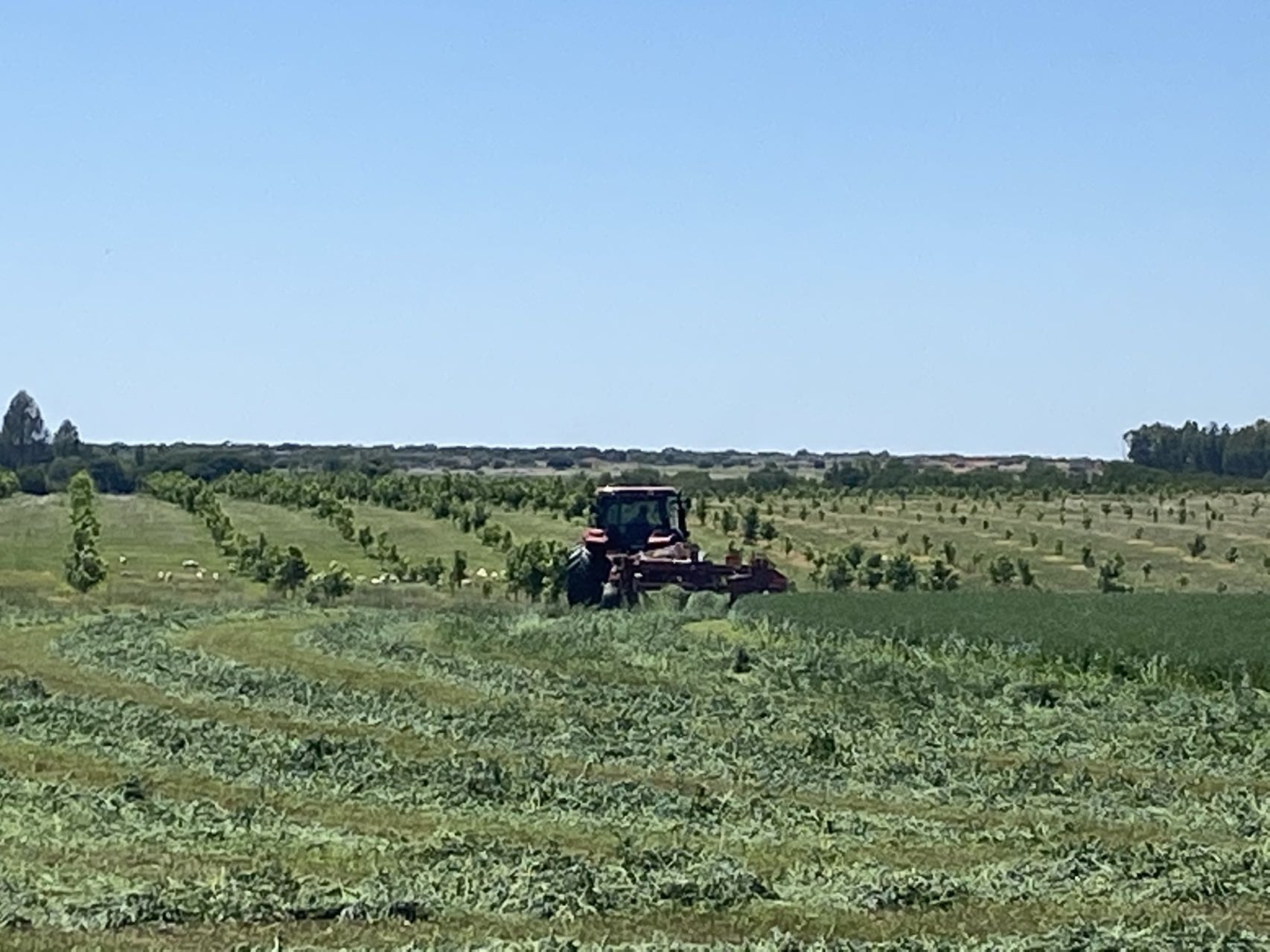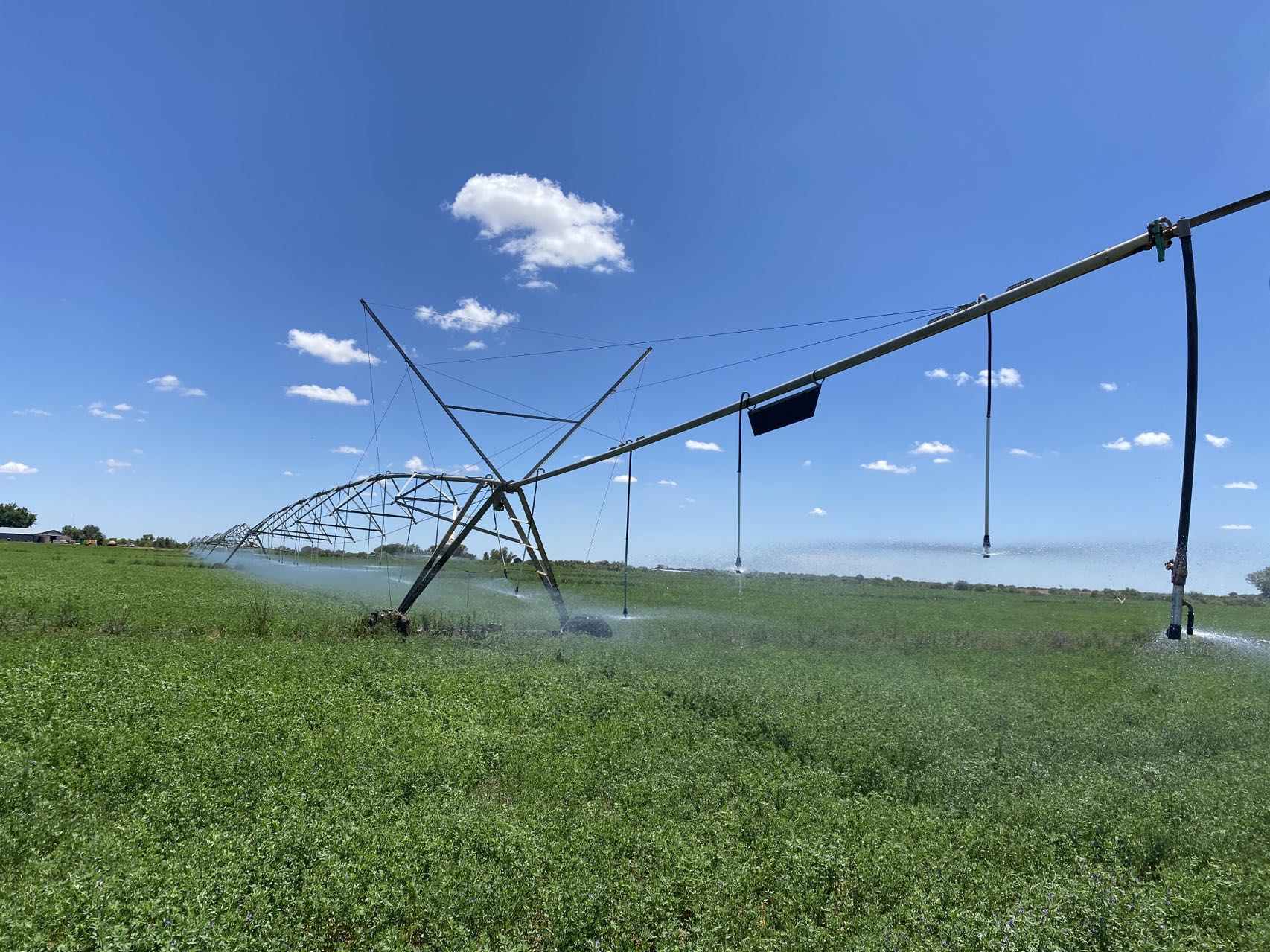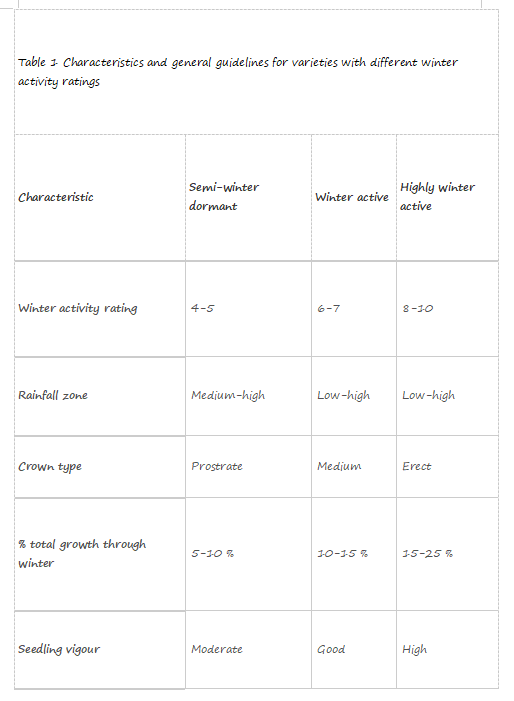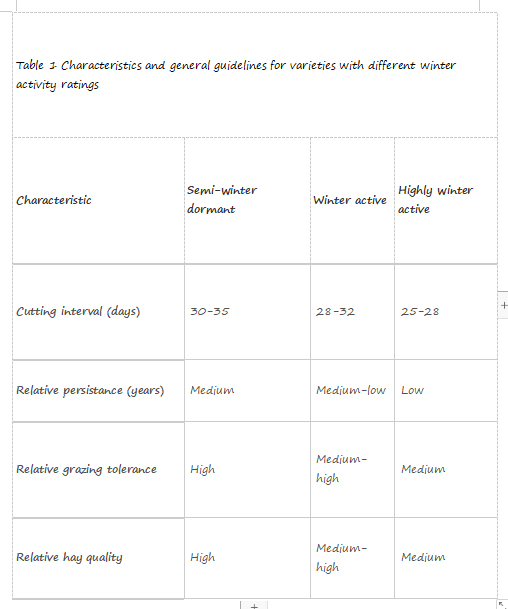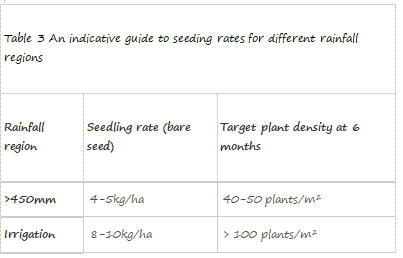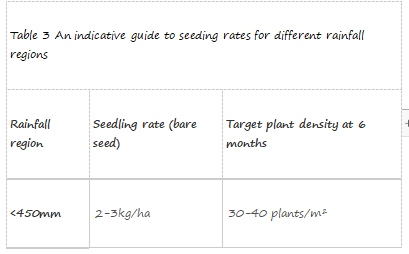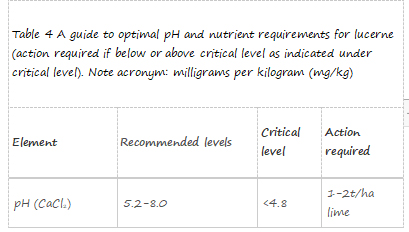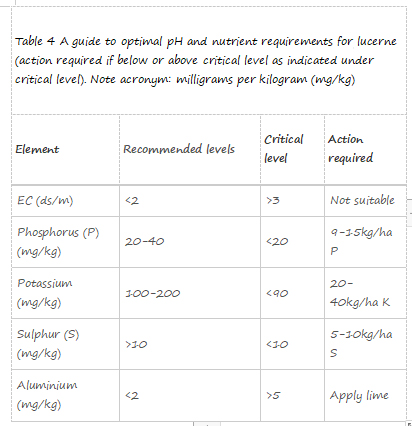Sowing should not start until good weed control is achieved. This is because seedling lucerne is a poor competitor against weeds, effective herbicide options are limited and the seedling develops slowly and may take up to eight weeks before herbicides can be safely used.
Thorough weed control prior to sowing is essential in the establishment year. The importance of weed control increases as growing season length shortens. Annual ryegrass, capeweed, geranium, radish and turnip are major weeds when establishing lucerne. Spring and summer weeds including melons, wireweed, mintweed, dock and sorrel must be controlled before sowing as they are difficult to control in seedling lucerne and will compete for water during the critical first summer.
Lucerne is best established after a crop that has reduced weed burden. If sown after pasture, weed reduction by grazing and winter pasture topping (hay freezing) with glyphosate or spraytopping with paraquat is recommended. To control weeds emerging at the seasons break, apply a 'doubleknock' treatment of glyphosate followed by Sprayseed® within 10 days of the initial glyphosate application. Trifluralin can be incorporated to control the emergence of ryegrass and wireweed.
